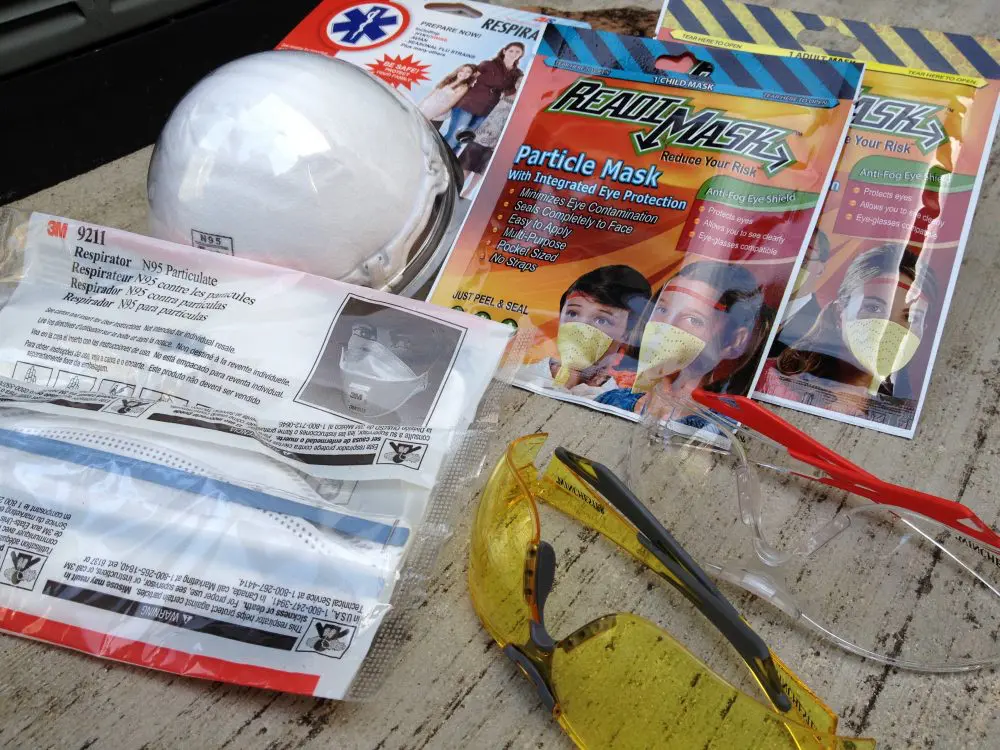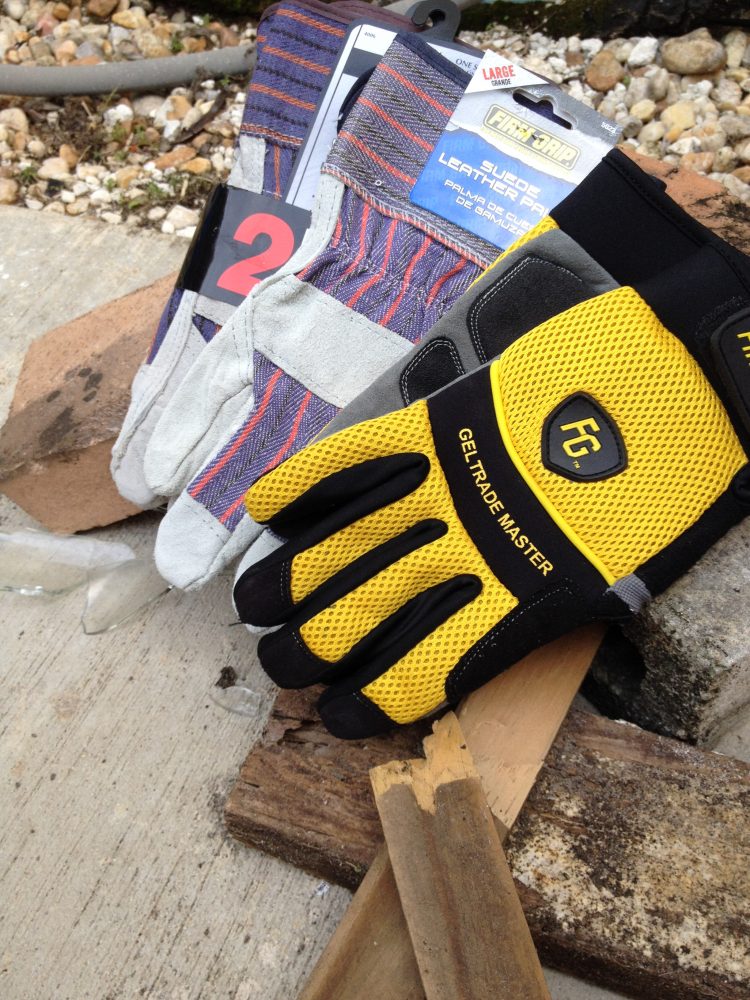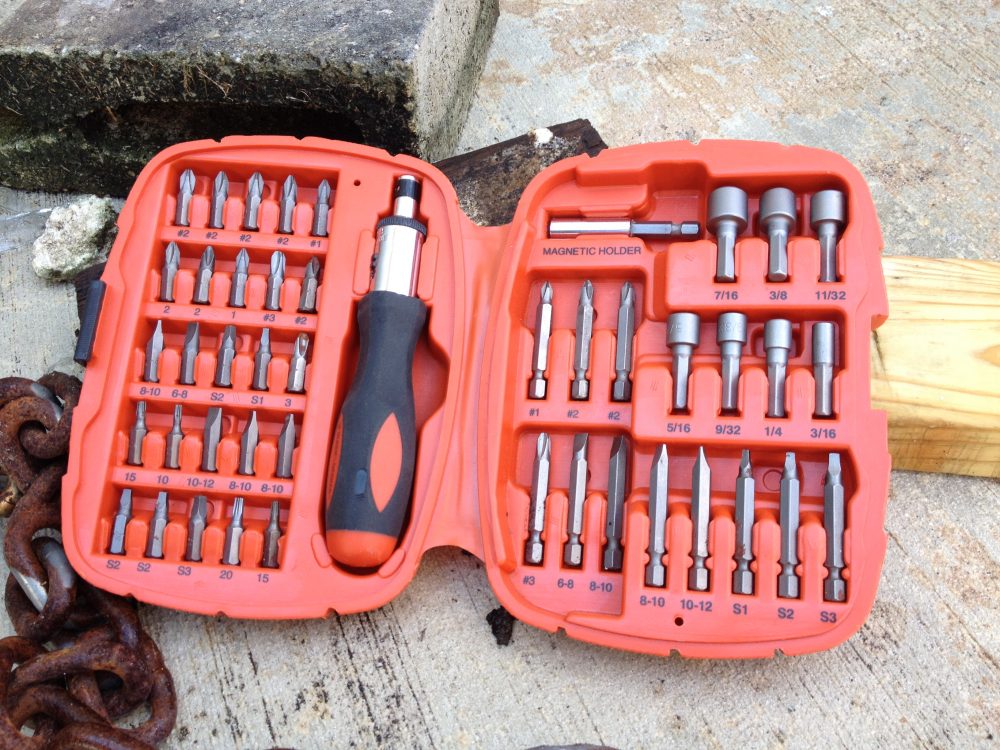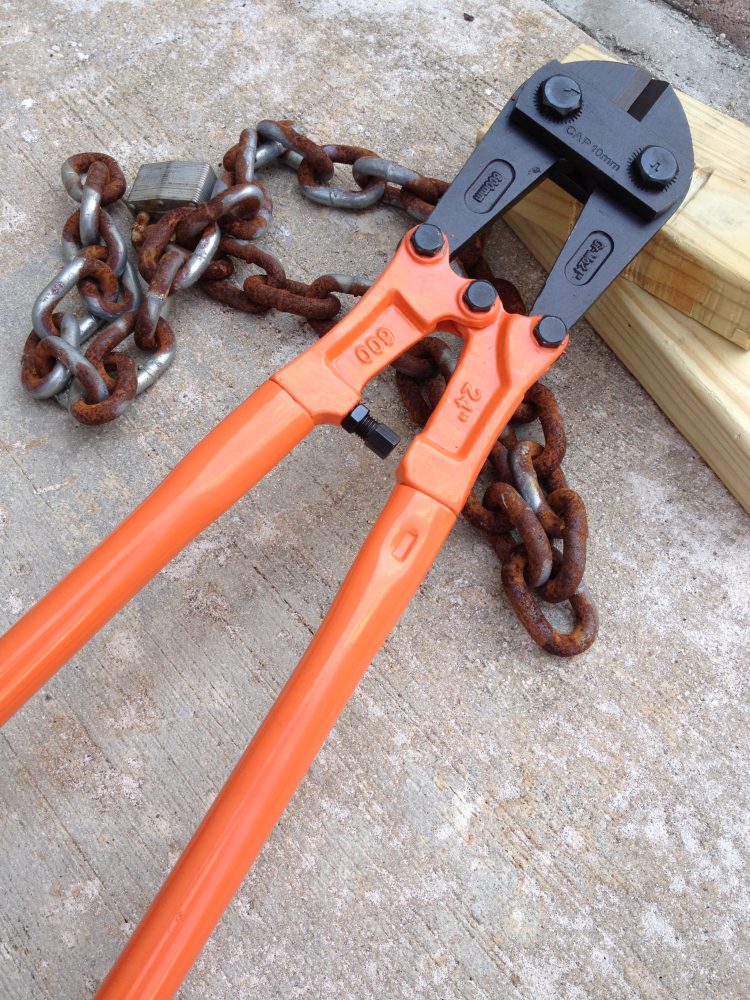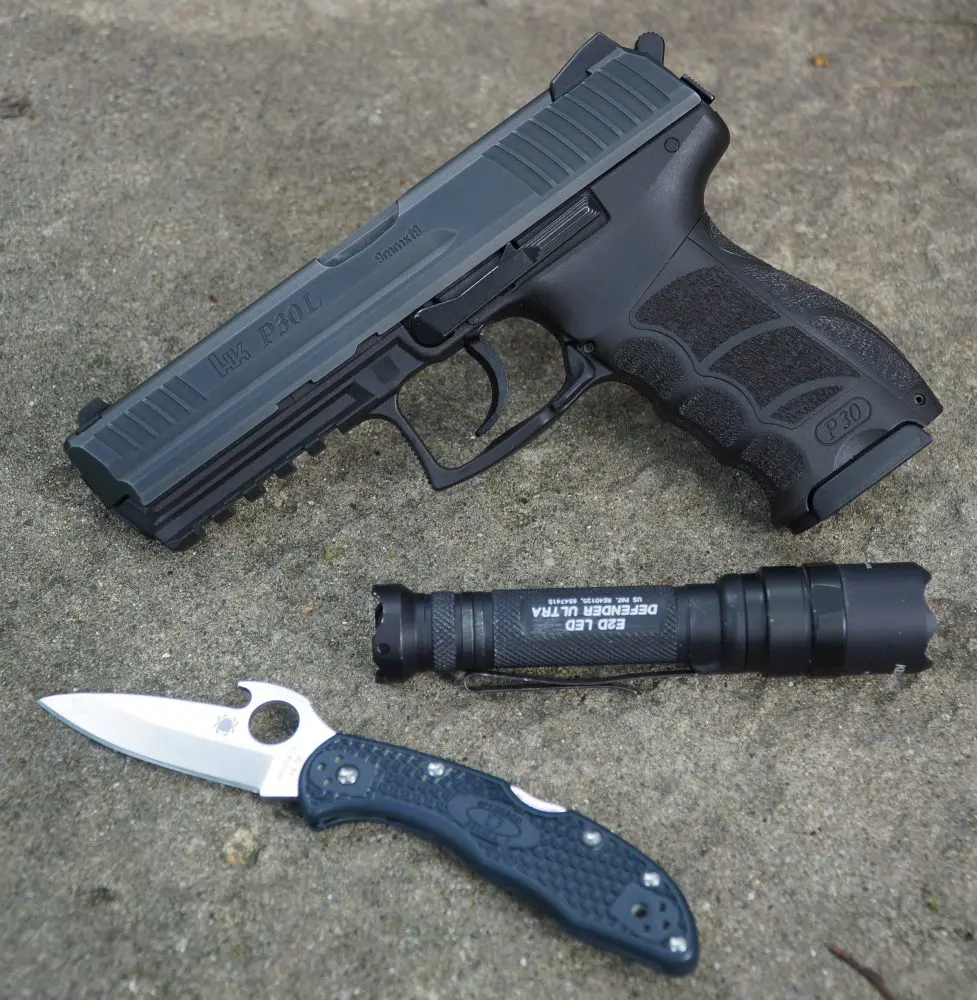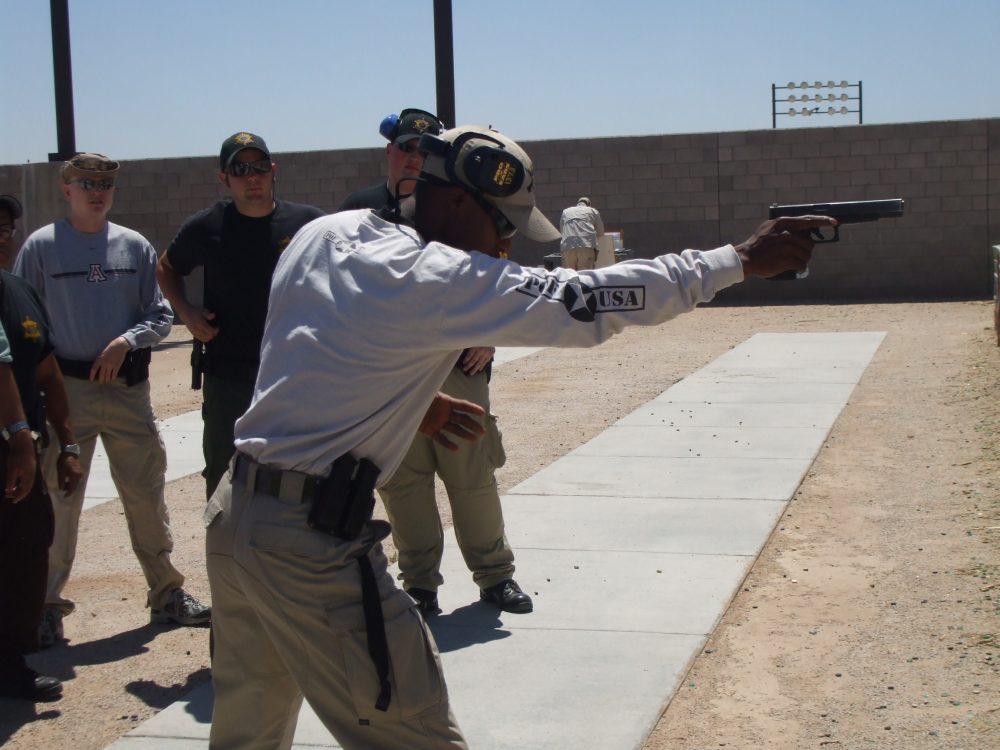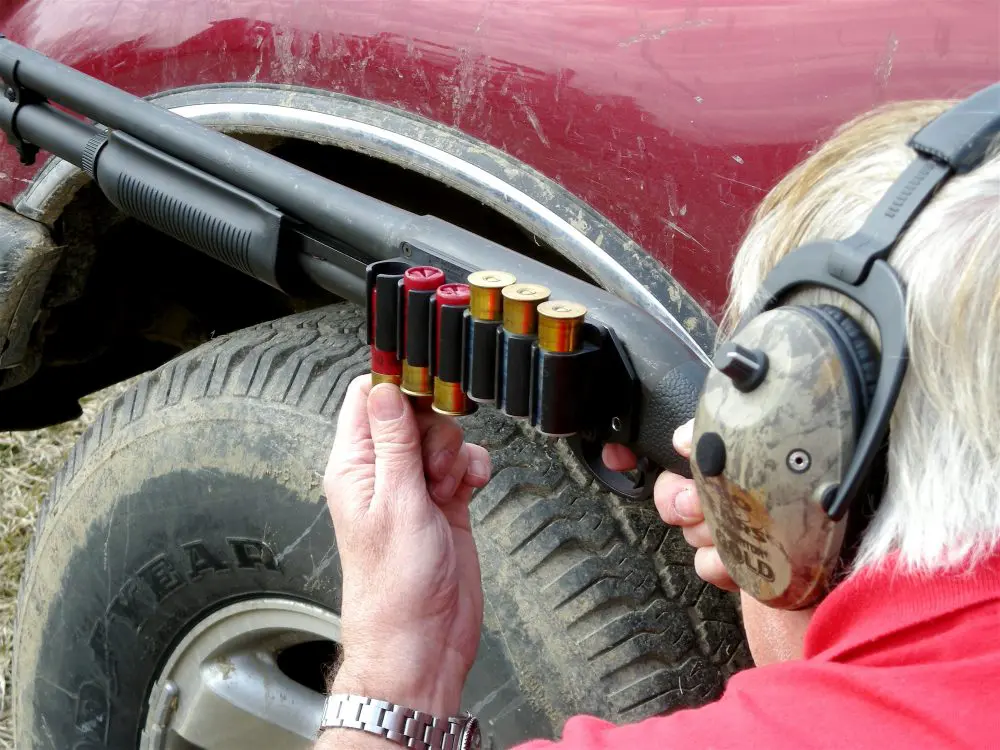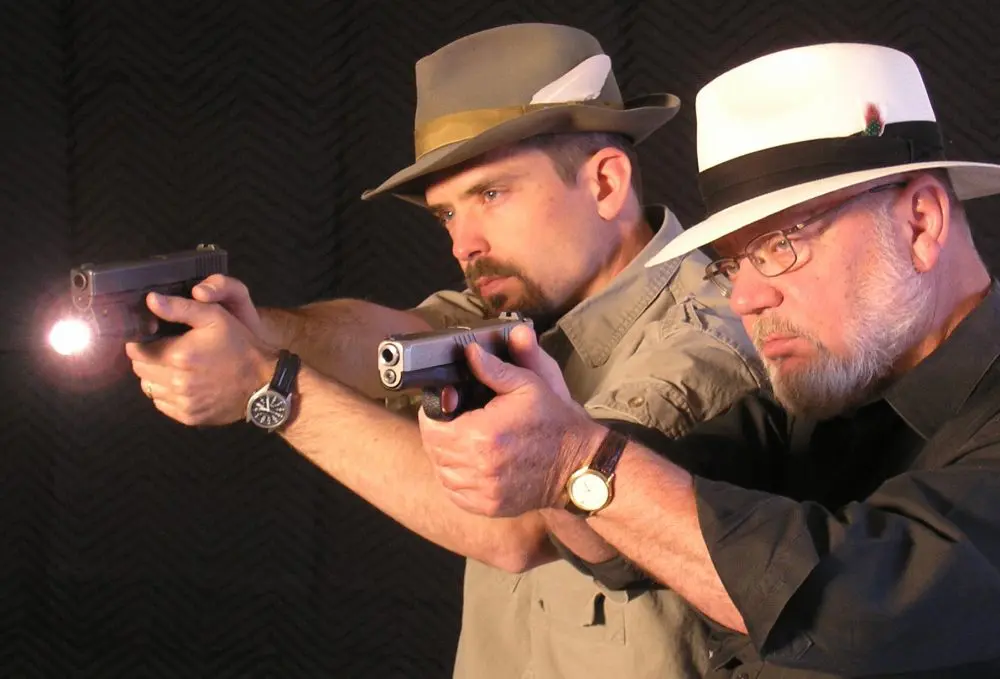When people use the term “evacuation,” they’re usually referring to the temporary but rapid removal of large groups of people from a structure or disaster area as a rescue or precautionary measure.
Few of us consider that we may need to do an evacuation or self-rescue from our own home. Even fewer have made any preparations, plans or have the proper tools for such an event. Nonetheless, the reality is that we may one day encounter a scenario where evacuation may be our only hope for survival.
A self-rescue can be as simple as opening a door and walking out of a dangerous area, or as complicated and dangerous as having to dig, pry or smash our way out of a damaged structure. In this article, I discuss ten must-have tools and accessories for urban self-rescue and emergency evacuation, and why we all need to be prepared for this possibility.
Simple N95-style mask and goggles, and the all-in-one ReadiMask
Table of Contents
I’VE BEEN THERE
In the early morning of 24 August 1992, Hurricane Andrew made landfall in southern Florida as a Category 5 hurricane. With 165 to 200 miles per hour winds, Andrew was one of the costliest hurricanes in U.S. history. Total losses were estimated at between $26.5 and $30 billion, in 1992 USD. At the time I lived in a small, quiet, tree-lined community just south of Miami called Country Walk. If southern Florida was the storm’s target, Country Walk was the bull’s eye.
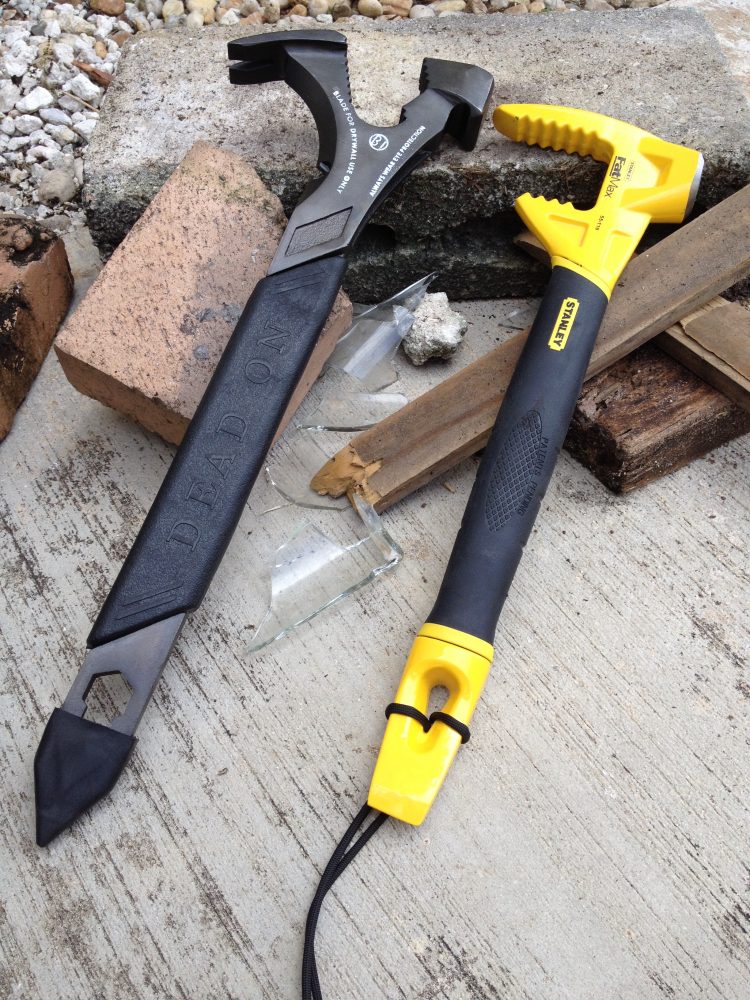
When Andrew’s full force and fury struck during the middle of the night, my family and I initially sought cover in an interior bedroom, but when pieces of the roof started flying off, we retreated into the shelter of last resort—a small closet. What followed was the stuff of nightmares. Only with the first light of day did the full extent of Andrew’s devastation come into focus: my neighborhood looked like a bombed-out war zone. Andrew destroyed 90% of the 1,700 homes in Country Walk, including mine.
It didn’t take a genius to figure out that our home’s remaining structure was unstable and uninhabitable. To make matters worse, looters started arriving in the area almost immediately after the storm. We needed to get out of the house—and the area—as quickly as possible. One of our vehicles was completely destroyed, but the vehicle in the garage was miraculously spared. After gathering up a few possessions and loading up the family, I was horrified to find that the garage door had been compromised and would not open.
The metal door was bent just enough to bind the rollers. It would not move one inch. I had to take the door down by any means necessary, but I also needed to be cautious. This was a very heavy double door, and the last thing I needed was to hurt myself. I managed to find a few small tools and went to work. Over an hour later, the door was finally down.
What should have taken 10 to 15 minutes took almost an hour and a half. Why, you ask? It’s very simple: I didn’t have the proper evacuation tools and I didn’t have any sort of plan. With the right tools, I could have been out sooner and with less risk of injury. Any lessons learned? You bet—read on.
URBAN EVACUATION TOOLS
Urban evacuation tools serve a very important purpose—to allow the user to quickly and safely overcome walls, doors, windows, or any other obstacles that may block an evacuation route. The tools discussed here have several things in common: they are well suited to the intended purpose and to the environment in which they will be used. They’re also a manageable size and weight, easy to store, and quick to deploy. Consider storing your tools in a heavy-duty duffle-type bag and keeping the bag in a secure, accessible location.
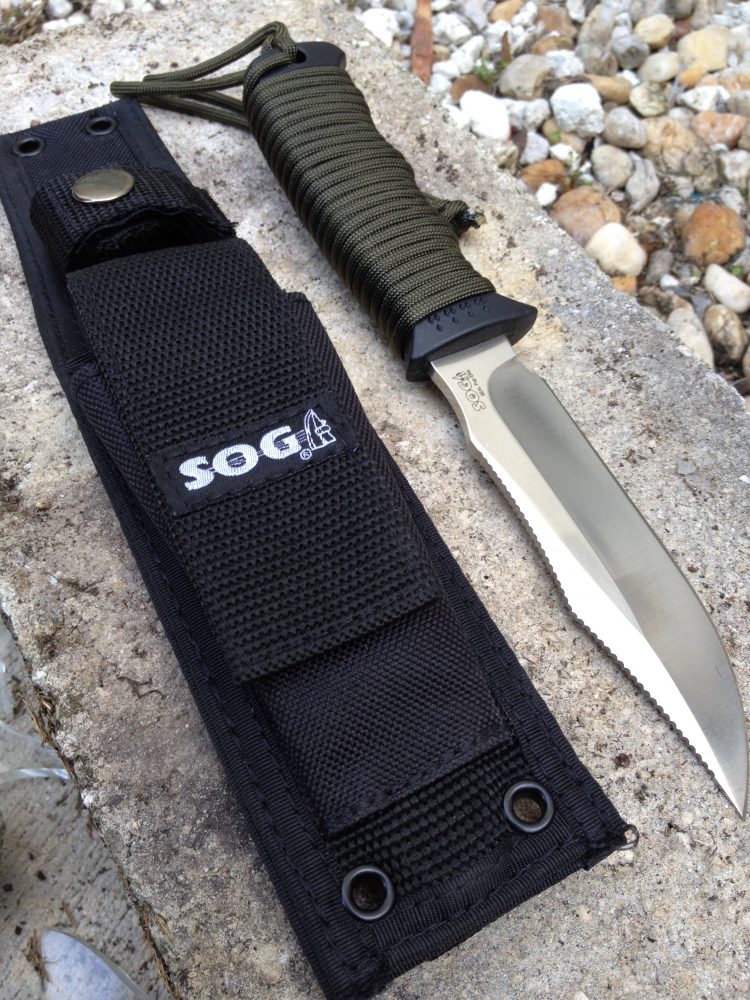
Evacuation/self-rescue tools can be anything from a screwdriver to the hydraulic devices used by emergency rescue personnel such as the Jaws of Life. Here I’m focusing on simple, affordable tools that an average person living in an urban area would likely need to overcome the most common obstacles in that environment. And as always, I’m keeping it reasonable and practical.
Quality tools can be expensive, and if you adhere to the survival mindset, you already know that you’ll need more than one of everything. (One is none, two is one.) In addition, we want to get the most for our hard-earned dollars. So in the recommendations below, I have tried to find a balance between quality and affordability.
The gloves, facemask, goggles, and mini trauma kit are not tools per se but items that will protect the person using the tools, or that will be important in the event of an injury. Keep in mind that if I had injured myself taking down that stubborn garage door, I would have been on my own. In the days—and in some instances weeks—after Hurricane Andrew, most local hospitals and emergency medical services were overwhelmed.
If you take into account the anticipated lack of proper medical attention after a disaster, then staying healthy becomes even more crucial. Having the proper tools, accessories and preparations will help you get the job done while minimizing the chance of injury.
Here are my top ten tools for urban evacuation and self-rescue. Get them now and keep them handy—you never know when you’ll need them. One thing is certain, however: if you do need them, you’ll need them desperately.
UTILITY/WRECKING BARS
These bad boys are incredibly effective demolition tools with serious attitude. They can be used for breaking down common building materials such as plywood, framing lumber, cinderblock, glass, sheetrock or just about anything else that gets in the way of your evacuation. These tools are essentially used for striking, prying, splitting, pulling nails, smashing doors, walls, locks, windows, hinges, or just demolishing anything that refuses to yield.
Consider products such as the Annihilator™ and Fat Max™. The Annihilator is 18 inches long, weighs 3.8 pounds, and is made by Dead On. The Fat Max is 15 inches long, weighs 2.8 pounds, and is made by Stanley. Both are formidable multipurpose breaching tools that will destroy anything that gets in your way. Plus, they’re affordable.
Always wear heavy-duty gloves and goggles when using striking tools. If there is, or you expect, dust or airborne debris, also wear a mask.
LED headlamp and high-intensity LED flashlights are affordable yet effective options.
FACE MASK & GOGGLES
If you can’t breathe, nothing else really matters. If you injure your eyes and can’t see, few other things will make much of a difference. Knowing this, protecting your eyes and lungs become major priorities in any evacuation or self-rescue effort.
A simple N95 dust mask will help protect you against dust, fine debris, and other airborne particulate matter. It may not be as effective as a full-face commercial gas mask, but it will help and can afford you valuable time to get out.
By the same token, goggles or safety glasses will help protect the upper part of your face and quite possibly prevent a serious eye injury. One very interesting new product is the ReadiMask, which combines the effectiveness of an N95 mask with a built-in eye shield. The ReadiMask seals completely to the face and provides a quickly deployable option that stores easily and can even be worn over eyeglasses.
Heavy-duty gloves made of leather or synthetic materials are one of the best options for protecting your hands.
KNIFE
In an urban setting, a good survival knife is essential. Some folks wrongly believe that survival knives are only useful for wilderness survival and neglect to include this valuable tool in their urban evacuation kit. Big mistake. Save the edge of your survival knife and use the other heavy-duty tools when appropriate, but there will always be a need for a sharp blade, no matter where you find yourself.
Get a heavy-duty full-tang knife made with durable, quality materials that will take a good deal of abuse. Many knives within a wide price range fit this description. Find one (at least) that works for you. Consider the SOG Seal Pup or comparable options.
FLASHLIGHT & HEADLIGHT
No matter what, you need to see what you’re doing, and you can’t count on having electricity after a disaster. In my case, I was working in a dark garage under very difficult conditions, with nothing more than the faint beam of a cheap plastic flashlight with an incandescent bulb and two D batteries that had seen better days.
I could have really used a quality hands-free headlight. Consider an LED headlamp, along with some high-intensity LED flashlights. There are affordable options that are compact, lightweight, and effective. Don’t forget to maintain a fresh supply of batteries.
Compact driver kit is all you may need in many circumstances.
HEAVY-DUTY GLOVES
Evacuation may involve digging through piles of rubble, swinging heavy-duty striking tools, and exposing your hands to a multitude of hazards. An evacuation site will often contain broken glass, splintered wood, mangled metal, and other sharp edges. Navigating your way through these conditions will expose you to a lot of potential dangers and you’ll need to protect your hands. A heavy-duty pair of leather work gloves can often be the answer.
These gloves are cheap and do a pretty good job of protecting your hands. If you can afford them, more expensive options offer better protection and fit much better. No glove offers 100% protection, but working with bare hands is just asking for trouble. Think rusty nails, shattered glass, splintered wood, and sharp metal edges. Some of these gloves cost in excess of $100 and may be great for other purposes, but for dealing with rubble, the $3 heavy leather work gloves may still be your best bet.
MULTI-TOOL AND DRIVER KIT
A compact driver set with an assortment of Slot (flat) blade, Phillips, and Hex tips is common and affordable. During an evacuation, there is no time to be digging around your house looking for tools. Maintain a multipurpose driver kit with your evacuation kit.
HEAVY-DUTY PLIERS/WIRE CUTTERS
A good multipurpose set of pliers and combination wire cutters should be in every evacuation kit. They’re compact and highly effective for getting into tight corners or cutting a small- to medium-sized wire.
Bolt cutters may be the life-saving tool in your evacuation bag. If you want tools that will last a long time and serve you well, buy quality.
BOLT CUTTERS
These are made to cut through a bolt, bar, cable or chain, and usually come in sizes ranging from 12 to 42 inches. The smaller sizes are lighter and more portable. Larger sizes offer more leverage and cutting power.
No matter the size of the bolt cutters, you’ll still need to use considerable muscle power when cutting thicker pieces of metal or chain. Is there a door with a large padlock standing in your way? A bolt cutter will usually make fast work of most padlocks, and will do so quietly—an added bonus in some circumstances. Invest in a quality set of bolt cutters if you want them to last. Cheaper ones usually fall apart, bend, and lose their overall effectiveness after just a few uses.
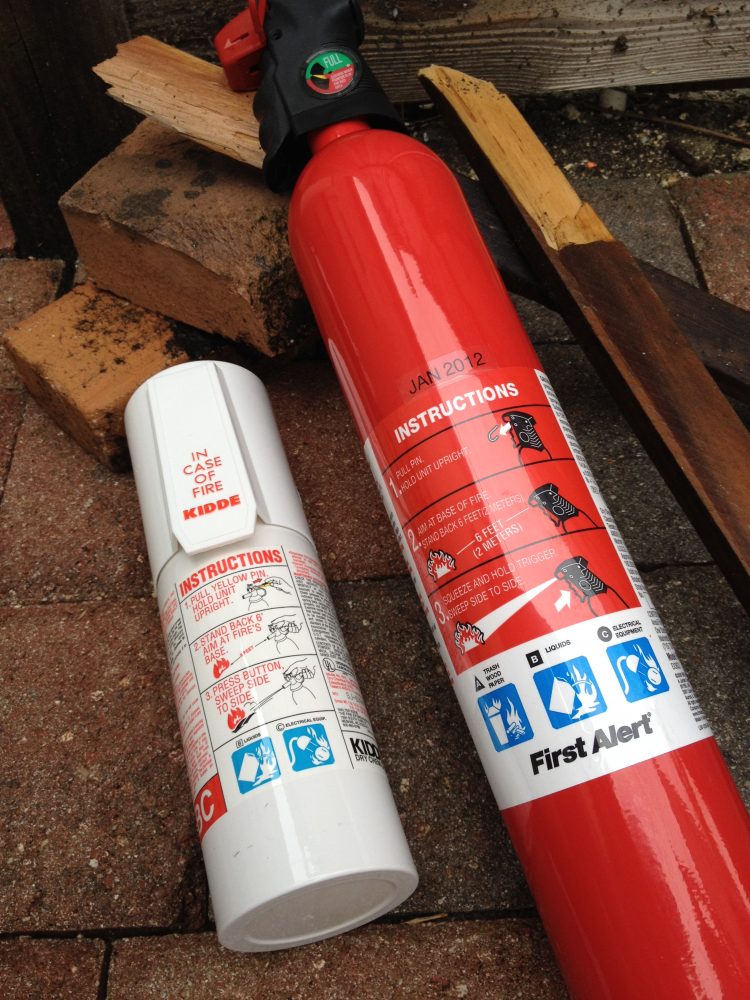
FIRE EXTINGUISHER
If a fire is blocking your only evacuation route, none of these tools will be of much use if you don’t have an effective way to avoid or extinguish the fire. Keep it handy and know how to use it.
MINI TRAUMA KIT
This is a limited first-aid kit with a very specific purpose—to stop serious bleeds. The basic kit contains a C-A-T (Combat Application Tourniquet), Celox brand blood clotting solution, 4X4 gauze pads, triangular multi-purpose bandage, and disposable latex-free gloves.
It’s basic but specific to the intended purpose. Keep it with your evacuation gear and have extras of all the listed items.
CONCLUSION
An evacuation/self-rescue can sometimes develop with little or no warning. Be prepared, have a plan, and keep the proper tools close at hand. Also be mindful that during a disaster, you may very well be completely on your own and should be prepared to address any contingency. Stay safe and be prepared.
Richard Duarte is a practicing attorney and currently teaches and consults in the areas of urban survival planning and preparation. He is the author of Surviving Doomsday: A Guide for Surviving an Urban Disaster. For the latest news and updates, connect with Richard on www.survivingdoomsdaythebook.com.
SOURCES:
Dead On Tools
(888) 797-7855
www.deadontools.com
ReadiMask
(732) 860-8819
www.readimask.com
SOG Specialty Knives & Tools, Inc.
(888) 405-6433
www.sogknives.com
Stanley Tools
www.stanleytools.com
